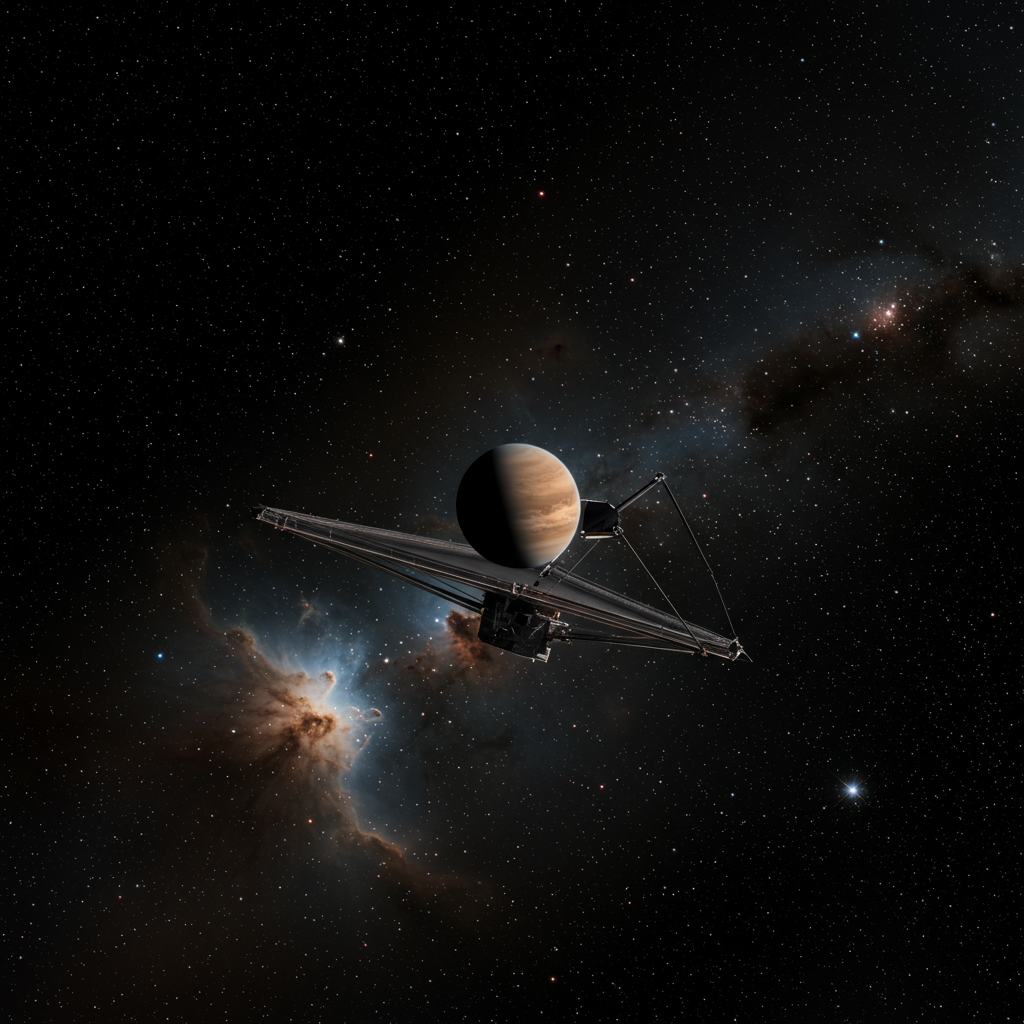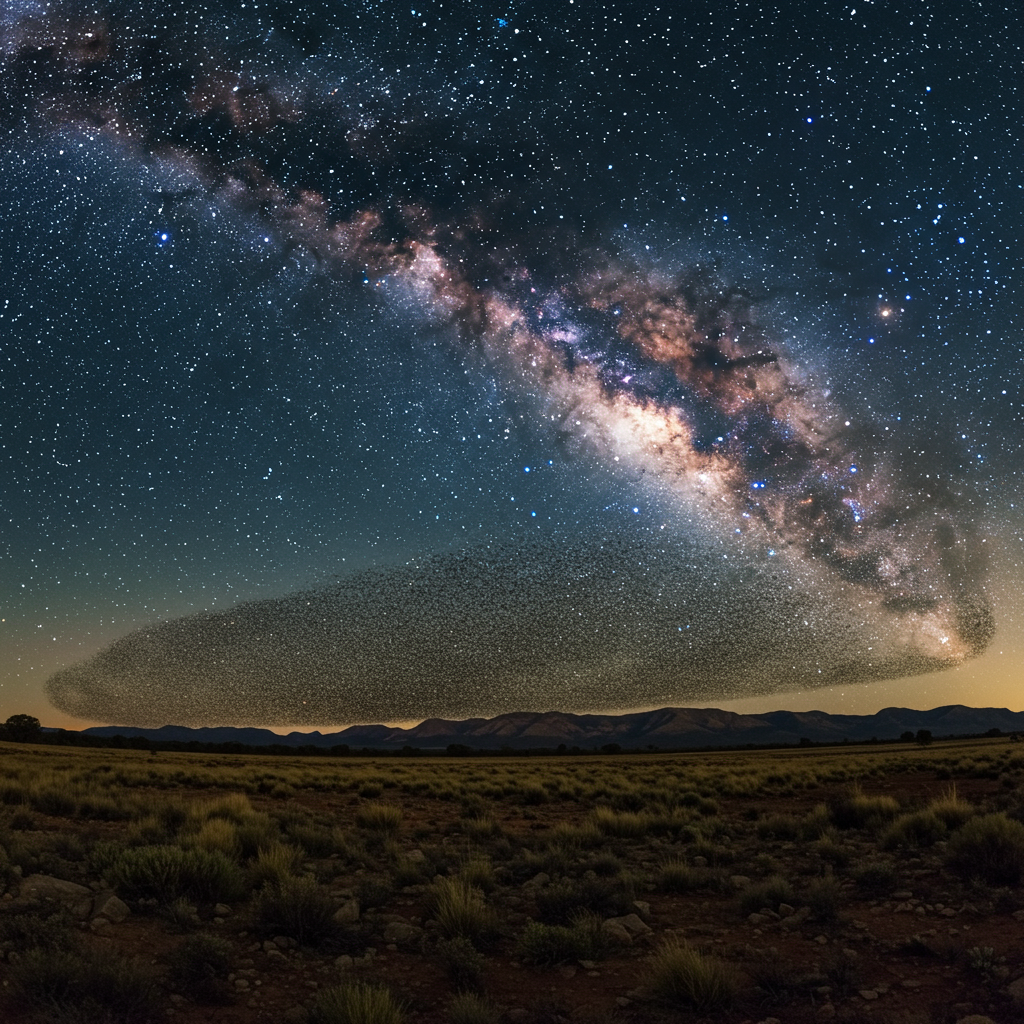James Webb Space Telescope Achieves Major Milestone with First Direct Exoplanet Discovery
The James Webb Space Telescope (JWST) has achieved a significant feat, capturing unprecedented direct images of an exoplanet – a world beyond our solar system – for the first time as part of a new planet discovery. This landmark observation provides astronomers with a rare direct look at a young planetary system taking shape.
The newly imaged planet, officially named TWA 7b, orbits a young red dwarf star called TWA 7, located approximately 110 to 111 light-years away in the constellation Apus. Unlike the vast majority of the nearly 6,000 exoplanets discovered since 1992, which are found using indirect methods like observing a star’s subtle wobble or dip in brightness as a planet passes in front, Webb captured TWA 7b’s faint light directly.
TWA 7b: A Saturn-Sized Giant in Its Youth
Estimated to be roughly the mass of Saturn (about 100 times the mass of Earth or approximately 30% of Jupiter’s mass), TWA 7b is notably the lightest exoplanet ever observed using direct imaging techniques. This makes it about 10 times less massive than any planet previously imaged directly with a telescope, showcasing JWST’s exceptional sensitivity, particularly in the thermal infrared spectrum.
The TWA 7 system is remarkably young by cosmic standards, estimated to be only about 6.4 million years old (compared to our Sun’s middle age of 4.6 billion years). Scientists believe TWA 7b is still glowing red hot from its formation process, with an estimated temperature of around 47°C (120°F). Observing such a young system offers invaluable insights into the early stages of planet formation and evolution. As Dr. Anne-Marie Lagrange, the astrophysicist from the Paris Observatory who led the observations, remarked, they are truly “witnessing the youth of the planetary system.”
Peering Through Starlight: How Webb Captured the Image
Directly imaging an exoplanet is immensely challenging. Planets are far dimmer than their host stars, and from Earth’s perspective, they appear very close together, making the planet’s faint light easily overwhelmed by the star’s brilliant glare.
To overcome this, the research team utilized a specialized tool on Webb’s Mid-Infrared Instrument (MIRI) – a coronagraph. This device works like a miniature artificial eclipse, precisely blocking out the blinding light from the host star (TWA 7) to reveal the fainter objects orbiting nearby. Advanced image processing techniques were then applied to filter out any residual starlight.
Targeting young stars whose planetary disks are oriented ‘pole on’ or face-on relative to our view allowed astronomers to look down onto the system’s disk, providing a clear view of orbiting bodies still radiating heat from their formation. The 6.4-million-year-old TWA 7 system, already known to have three distinct debris rings and visible face-on, was an ideal candidate.
A Shepherd Planet Carving Its Path
The images from Webb revealed TWA 7b embedded within a disk of glowing dust and rocky debris surrounding its star. The system features three concentric rings of material. TWA 7b was detected as a faint infrared source residing within a clear gap or ‘hole’ in one of the narrow inner rings, located approximately 50 to 52 times the Earth-Sun distance from its star. This large orbital distance results in a lengthy orbital period, likely taking several hundred years to complete one revolution.
The planet’s location within this ring gap strongly supports a long-held theory: that orbiting planets can act as “shepherds,” using their gravitational pull to clear out material and carve these distinct gaps and structures within stellar disks. While previously theorized, this observation of TWA 7b provides compelling direct evidence for this mechanism in action. The findings even hint at the possible presence of a rare “Trojan disk,” dust trapped in the planet’s orbit, a phenomenon previously only predicted by theoretical models.
This direct imaging of a planet comparable in size to those in our own solar system marks a significant step forward in our ability to study exoplanets in detail, particularly in their formative stages. The data gathered is expected to shed light on the complex processes by which planetary systems, including our own, come into being.
While JWST can image planets as small as about one-tenth the mass of Jupiter, directly detecting Earth-like planets within habitable zones remains a challenge for future telescopes. However, this success with TWA 7b demonstrates Webb’s powerful capabilities and opens new avenues for exploring and understanding the diverse population of planets throughout the galaxy.
The findings were reported in the scientific journal Nature. Future observations with Webb are planned to study TWA 7b’s atmosphere and continue the search for other young, light, or cold exoplanets using direct imaging techniques.




